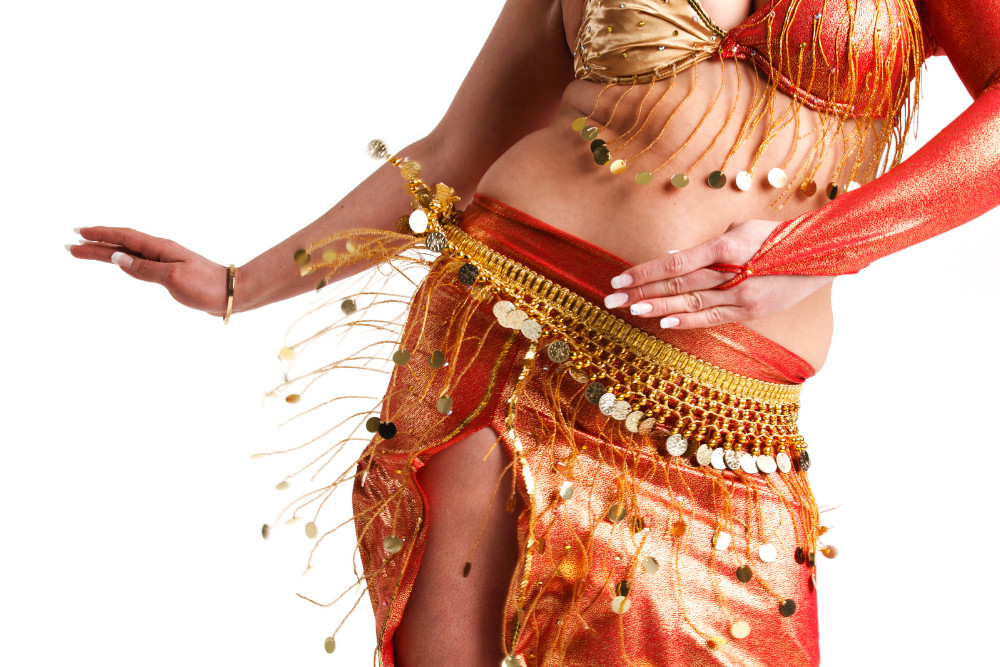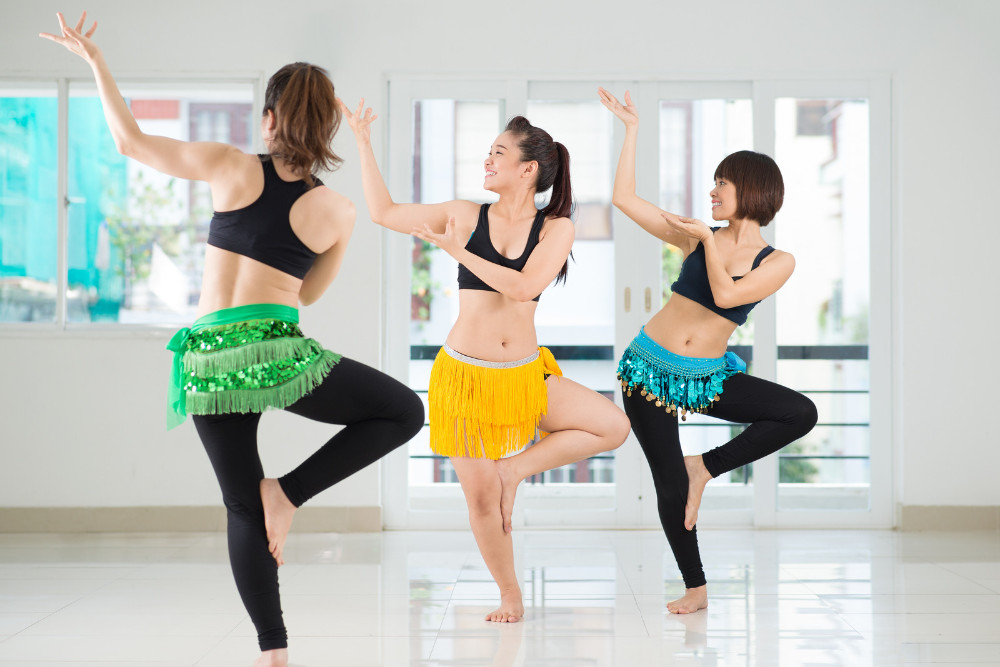What is it about belly dancing that has captivated audiences globally for millennia? The mesmerizing fluidity, the captivating rhythms, and the rich cultural heritage all contribute to its enduring appeal. More than just an aesthetic dance form, Belly Dance Origin is deeply rooted in ancient traditions, telling a story of cultural evolution and profound human expression. This article delves into the fascinating belly dance origin, tracing its historical path and exploring the diverse styles that have blossomed over centuries. Whether you are a dance aficionado, a history enthusiast, or simply intrigued, join us as we uncover the intricate history and vibrant present of belly dance.
The Origins of Belly Dancers
 the origins of belly dancing
the origins of belly dancing
Ancient Civilizations and Ritualistic Roots
Belly dance origin can be traced back to the ancient civilizations of the Middle East, North Africa, and the Mediterranean. Archaeological findings suggest that forms of belly dance were performed in these regions as far back as ancient Egypt and Mesopotamia. These early dances were not mere entertainment; they were deeply interwoven with fertility rituals, religious ceremonies, and community celebrations. In matriarchal societies, dance was a powerful expression of femininity and the life-giving force of women. Rituals honoring goddesses and celebrating the cycles of nature often incorporated movements that are considered precursors to modern belly dance. These dances were performed by women, for women, within sacred and communal settings, emphasizing the sacredness of female power and fertility.
Cultural Crossroads and Early Evolution
As civilizations interacted and trade routes expanded, belly dance origin began to absorb influences from various cultures. Ancient Greece and Rome, with their own rich dance traditions, likely contributed to the evolving art form. The movement of people and ideas across the Mediterranean and Middle East facilitated a cultural exchange that shaped the early development of belly dance. While concrete documentation from these periods is scarce, artistic depictions and historical accounts suggest a continuous evolution of movement vocabularies and performance contexts. The dance adapted and transformed as it traveled, reflecting the diverse aesthetics and spiritual beliefs of different communities, yet always retaining its core expression of femininity and vitality.
Evolution Through the Ages
 belly dance course
belly dance course
Belly Dance in the Medieval Era
The medieval period presented a complex chapter in the history of belly dance. During the Islamic Golden Age, belly dance, known as Raqs Sharqi in Arabic, flourished in certain courts and urban centers. It was appreciated as a refined art form and performed by skilled female dancers for royal and aristocratic audiences. However, societal attitudes towards dance varied across different regions and time periods. In some contexts, belly dance faced periods of suppression or was relegated to the fringes of society due to religious or social conservatism. Despite these fluctuations, belly dance persisted, adapting to different social climates and finding new avenues for expression. Traveling Romani communities, with their own vibrant dance traditions, played a significant role in preserving and transforming belly dance as they migrated through Europe and the Middle East, adding their unique flair and dynamism to the art form.
The 20th Century and Global Popularization
The 20th century marked a turning point for belly dance, witnessing its resurgence and global popularization. The rise of cinema and world travel exposed belly dance to Western audiences, often through romanticized and Orientalist lenses. Hollywood films and international expositions played a role in creating a fascination with this exotic dance form. Dancers like Badia Masabni in Egypt modernized and staged belly dance for theatrical performances, contributing to the development of cabaret-style belly dance. Later, dancers from the Middle East and North Africa immigrated to the West, bringing authentic styles and teaching to new generations. This led to a belly dance renaissance in Europe and North America, with the emergence of diverse styles like American Tribal Style and Tribal Fusion, blending traditional movements with contemporary aesthetics and global influences.
Cultural Significance and Symbolism
Embodiment of Femininity and Celebration of Life
Throughout its history, belly dance has remained deeply connected to themes of femininity, fertility, and celebration. The movements themselves often mimic natural rhythms and cycles – the undulations of waves, the swaying of trees, the cyclical nature of life, death, and rebirth. Historically, belly dance was performed during important life events such as births and weddings, serving as a communal expression of joy, support, and celebration. It was a way for women to connect with each other, share experiences, and honor the different stages of womanhood. In many cultures, belly dance continues to be a powerful form of female empowerment and body positivity, celebrating the beauty and strength of the female form in all its diverse shapes and sizes.
Costume and Movement as Narrative
Every aspect of belly dance, from the costume to the specific movements, carries cultural significance and can be seen as a form of non-verbal communication. Traditional costumes, often adorned with coins, beads, and intricate embroidery, are not merely decorative. Coins, for example, can symbolize prosperity and the dancer’s wealth or skill. The veil, a flowing piece of fabric, is used to create dramatic entrances and exits, adding layers of mystery and allure to the performance. Specific movements also hold symbolic weight. Circular hip movements can represent the cyclical nature of life, while sharp, percussive movements can convey strength and energy. The dancer uses her body as a canvas to tell stories, express emotions, and connect with the audience on a deeper, often subconscious level.
Styles and Techniques: A Diverse Spectrum
Traditional and Regional Styles
The rich history of belly dance origin has resulted in a wide array of traditional and regional styles, each reflecting the unique cultural nuances of its place of origin. Egyptian Raqs Sharqi is renowned for its elegance, fluidity, and intricate isolations, particularly in the hips. Lebanese belly dance often incorporates more lively and flirtatious movements, with a greater emphasis on footwork and traveling steps. Turkish belly dance is known for its energetic and acrobatic movements, as well as its use of floor work and zills (finger cymbals). These traditional styles are not static; they continue to evolve within their respective cultural contexts, influenced by contemporary trends while maintaining their distinct characteristics.
Modern Fusion and Innovation
The global spread of belly dance has spurred a wave of fusion styles that blend traditional belly dance movements with other dance genres. Tribal Fusion emerged as a prominent style, incorporating elements from flamenco, Indian dance, and modern dance, often characterized by dramatic costumes, strong stage presence, and complex layering of movements. American Tribal Style (ATS) focuses on improvisational group performances, drawing inspiration from folkloric and tribal dance forms of the Middle East, North Africa, and India. Gothic Belly Dance combines the aesthetics of gothic subculture with belly dance movements, creating a darker and more theatrical style. These fusion styles demonstrate the ongoing dynamism and adaptability of belly dance, pushing boundaries and attracting new audiences while still honoring the core essence of the art form.
Learning and Engaging with Belly Dance
Finding Your Path into Belly Dance
For those captivated by the allure of belly dance origin and wanting to learn, numerous avenues are available. Local dance studios and community centers often offer belly dance classes for all levels, from beginner to advanced. Workshops and intensives taught by experienced instructors provide opportunities for deeper learning and skill development. Online resources, including instructional videos and online classes, have made belly dance accessible to a global audience. When seeking instruction, it’s beneficial to research the instructor’s background and training to ensure they have a solid understanding of belly dance technique and cultural context. Joining a local belly dance community can also enhance the learning experience, providing support, encouragement, and opportunities to connect with fellow dancers.
Core Techniques and Foundational Moves
Belly dance, despite its seemingly improvisational nature, is built upon a foundation of specific techniques and movements. Mastering these fundamentals is crucial for developing good technique and preventing injuries. Key techniques include isolations – the ability to move different parts of the body independently – particularly in the hips, ribcage, and shoulders. Shimmies, rapid vibrations of the hips or ribcage, are a signature element of belly dance. Undulations, fluid, wave-like movements of the torso, create a sense of grace and continuity. Figure eights, hip movements tracing the shape of an eight, develop hip flexibility and control. Understanding posture, body alignment, and muscle engagement are also essential for executing movements safely and effectively. As beginners progress, they can explore more complex combinations and stylistic variations, building upon these core techniques to express their own artistry.
Conclusion
Belly dance origin is a story that spans millennia and continents, a testament to the enduring power of dance as a form of cultural expression and human connection. From its ancient roots in fertility rituals to its modern globalized forms, belly dance continues to evolve and captivate. Whether you are drawn to its historical depth, its diverse styles, or its empowering celebration of the feminine, belly dance offers a rich and rewarding journey of discovery. Exploring belly dance is not just learning steps; it is engaging with a vibrant tapestry of history, culture, and personal expression. To experience the magic of belly dance firsthand, consider attending a live performance or even trying a beginner class. You might just find yourself enchanted by this timeless art form.
Frequently Asked Questions
What are the primary benefits of learning belly dance?
Belly dance offers numerous physical and mental benefits, including improved core strength, flexibility, posture, and coordination. It’s a low-impact cardiovascular workout that can also reduce stress and boost self-esteem.
Is belly dance solely a women’s dance form?
While traditionally associated with women, belly dance is not exclusive to any gender. Men also perform and enjoy belly dance, contributing to its diverse and evolving landscape.
How should I choose a belly dance costume for beginners?
For beginners, comfort and ease of movement are key. Loose-fitting clothing like yoga pants or leggings and a comfortable top are suitable for classes. As you progress, you can explore more traditional costumes, considering the style of belly dance you are learning.
How long does it typically take to become proficient in belly dance?
Proficiency in belly dance is a journey that varies depending on individual dedication, practice frequency, and learning goals. Basic movements can be learned relatively quickly, but developing artistry and mastery takes consistent practice over years.
What types of music are used in belly dance performances?
Belly dance music is incredibly diverse, ranging from traditional Middle Eastern and North African music to modern fusion tracks that incorporate electronic, pop, or world music elements. The music’s rhythm, melody, and instrumentation play a crucial role in inspiring and guiding the dancer’s movements.
